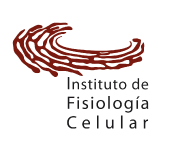Fabrication of Adhesive Substrate for Incorporating Hydrogels to Investigate the Influence of Stiffness on Cancer Cell Behavior
Vázquez-Victorio, G., Rodríguez-Hernández, A., Cano-Jorge, M., Monroy-Romero, A. X., Macías-Silva, M., & Hautefeuille, M. (2020). Fabrication of Adhesive Substrate for Incorporating Hydrogels to Investigate the Influence of Stiffness on Cancer Cell Behavior. Cancer Cell Signaling, 277?297. doi:10.1007/978-1-0716-0759-6_18
© 2021, Springer Science+Business Media, LLC, part of Springer Nature. Stiffness control of cell culture platforms provides researchers in cell biology with the ability to study different experimental models in conditions of mimicking physiological or pathological microenvironments. Nevertheless, the signal transduction pathways and drug sensibility of cancer cells have been poorly characterized widely using biomimetic platforms because the limited experience of cancer cell biology groups about handling substrates with specific mechanical properties. The protein cross-linking and stiffening control are crucial checkpoints that could strongly affect cell adhesion and spreading, misrepresenting the data acquired, and also generating inaccurate cellular models. Here, we introduce a simple method to adhere to polyacrylamide (PAA) hydrogels on glass coverslips without any special treatment for mechanics studies in cancer cell biology. By using a commercial photosensitive glue, Loctite 3525, it is possible to polymerize PAA hydrogels directly on glass surfaces. Furthermore, we describe a cross-linking reaction method to attach proteins to PAA as an alternative method to Sulfo-SANPAH cross-linking, which is sometimes difficult to implement and reproduce. In this chapter, we describe a reliable procedure to fabricate ECM protein–cross-linked PAA hydrogels for mechanotransduction studies on cancer cells.


